
Ha Nam is a low-lying area at the southern gateway of the Hanoi capital with a pleasant climate and favorable nature. Ha Nam is not only famous for its long-standing culture, charming scenery, historical sites, and pristine landscapes but also famous for many traditional festivals imbued with national identity. When tourist destinations, weekend picnics near Hanoi such as Mai Chau, Tam Dao, Ba Vi … are gradually becoming familiar, Ha Nam tourism is an attractive new option that is worth your time. considered.
Ba Danh Pagoda – Ngoc mountain
Ba Danh Pagoda, also known as Bao Son, worships Ba Chua Danh (God Phap Vu). This famous sacred pagoda is located next to the poetic Ngoc mountain, 10km from Phu Ly city, facing the south direction directly overlooking the Day river, surrounded by nature with charming scenery of sky, clouds, rivers, and beautiful scenery. very quiet and peaceful. For generations, the Ba Danh pagoda has been woven with stories of love, strange stories revolving around its famous emptiness, with the focus being on the statue of Ba Danh. Visiting the temple, visitors can also ask about the monks to hear more interesting stories about the origin and history of the Ba Danh pagoda.
After visiting the pagoda, you should go down to the majestic wharf paved with gray and white stone of the pagoda on the banks of the poetic Day River, admire the charming scenery of the mountains, drop yourself in the fresh nature away from the dust. the hustle and bustle of the city. If you still have time, please go through the luxuriant orchard with a thousand-year-old old sycamore tree to go to the top of Ngoc mountain, watching the whole river, water, clouds and sky from above. The story of why Ba Danh pagoda is empty of visitors still has no answer. Is it because the temple is sacred or because the location is not convenient to travel to? Perhaps no one will know what the real answer is, it’s just that when you want to find a place to purify your soul and find some peace, remember the deserted Ba Danh temple of Ha Nam.
Location: Danh Xa village, Ngoc Son commune, Kim Bang district, Ha Nam province.
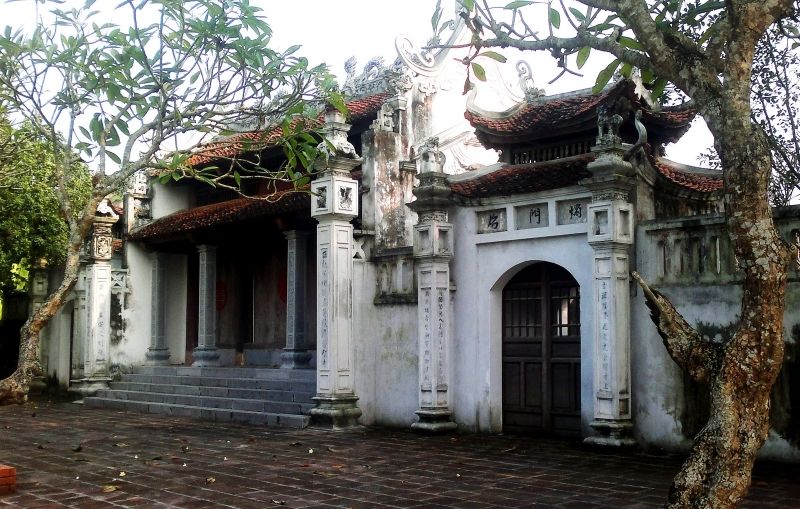
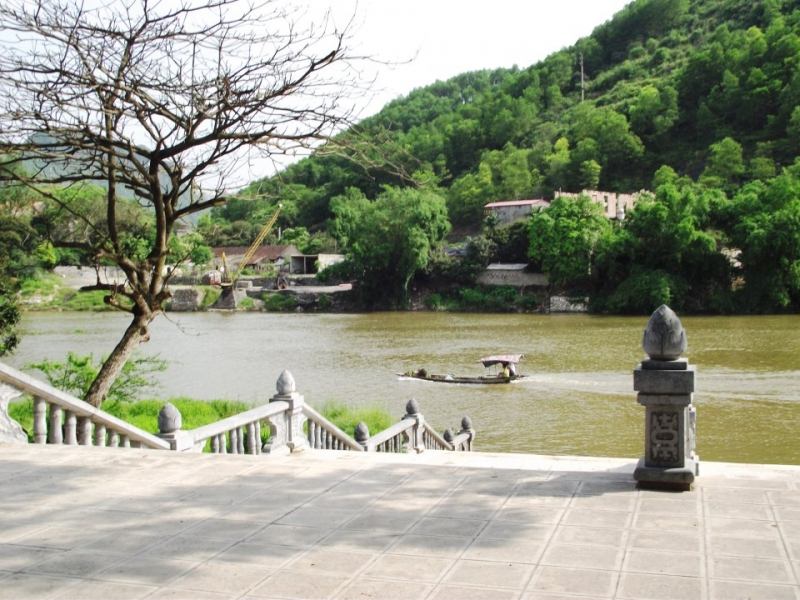
Ba Kien House – Prototype of Vu Dai village
Vu Dai village is a famous place associated with the short story “Chi Pheo” with the characters accompanying the years such as Ba Kien, Chi Pheo, Thi No. In fact, the prototype of Vu Dai village is Dai Hoang village, Nhan Hau village, Hoa Hau commune, Ly Nhan district, Ha Nam province – the hometown of realist writer Nam Cao. Visiting the village, visitors will be able to see the old traces of a Vietnamese village at the end of the 18th century with the sound of weaving, shady country roads with a few tiled roofs and rows of bricks still standing. that with time.
Visiting Ba Kien’s house , you will not be surprised when experiencing more than 100 years of rain and sun, bombs falling and exploding. This 3-room house with ironwood columns and meticulously carved stone pillars is still standing, the tile roof and carved patterns are intact and have not been repaired. Around the house is a shady banana garden reminiscent of the rustic love story of Chi Pheo – Thi No with a bowl of spicy onion porridge filled with humanity. Ba Kien’s house is part of the project “Nam Cao Realism Garden” to preserve the writer’s entire literary career. In the memorial house, there is an altar and many memorabilia of the writer during his lifetime.
Today, looking back to Vu Dai village is not only to recall a lively time appearing through the pen of Nam Cao, but visitors also have the opportunity to enjoy delicious and idyllic famous specialties here. It’s a pot of braised fish in a clay pot that Nhan Hau can’t find anywhere else, eaten with a bowl of hot steamed rice that everyone craves. It is the banana chamber of Dai Hoang, the sweet and sweet aroma that lingers on the tip of the tongue, or the smooth, dark red seedless persimmon of Nhan Hau. Maybe just that much is enough to make people want to stop by and come back here again and again.
Location: Hamlet 11, Dai Hoang village, Hoa Hau commune, Ly Nhan district, Ha Nam province.
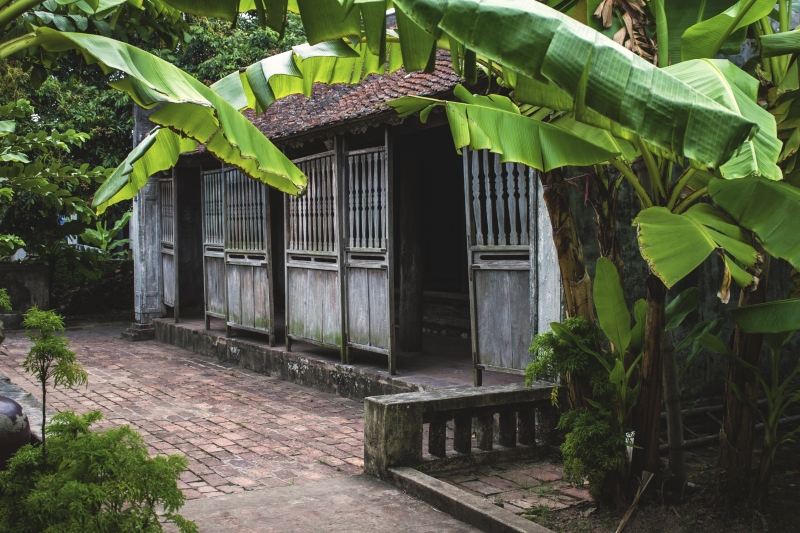
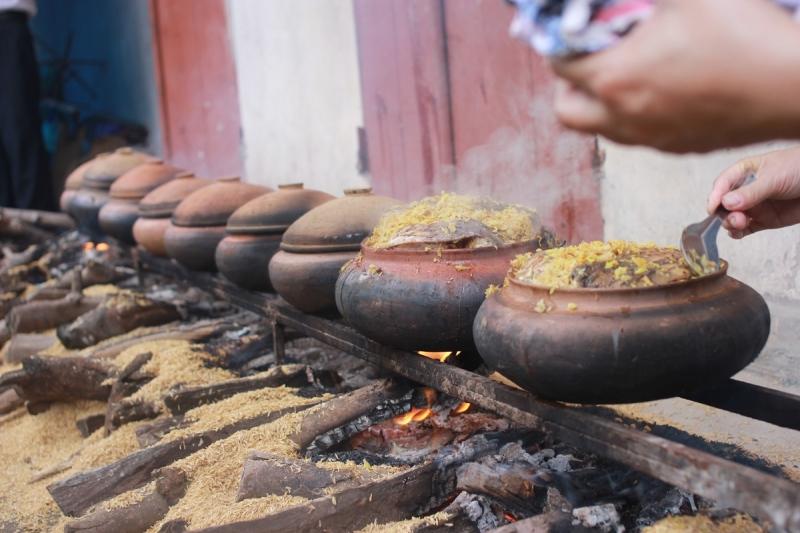
Truc Temple – Ngu Dong Son
Truc temple complex – Ngu Dong Son worships the national hero Ly Thuong Kiet, located in the middle of charming green space, with mountains and rivers, and an interesting cave in the middle of a poetic bamboo forest. Legend has it that in 1089, Ly Thuong Kiet’s fleet went to conquer Quyen Son village. Suddenly, a strong wind blew, broke the mast and swept the army’s flag to the top of the Forbidden Mountain. Ly Thuong Kiet found it strange, so he stopped the boat and went ashore with the soldiers to make sacrifices to heaven and earth to pray for a great victory. That time, when he returned from a big victory, Ly Thuong Kiet and his army came here to give thanks, reward three troops and open a festival for the villagers to celebrate the victory. He named the mountain Cuon Son to commemorate the merits of the national hero, the villagers set up a temple in the place where he held the festival, which is Truc Temple today.
The temple is made of ironwood, built in the style of Dinh, including the temple gate, the front hall, and the harem, surrounded by bamboo trees. Next to Truc temple is Cam mountain, also known as Cuon Son mountain, associated with an ancient legend. Following the trail to the top of the mountain, visitors will find a very special natural stone chessboard as well as admire the charming panorama. In the heart of Cam Mountain is the Ngu Dong system consisting of 5 continuous caves over 100m long with diverse cave structures and various types of stalactites.
Every year, the Truc Temple Festival takes place from the 1st of January to the 10th of February of the lunar calendar with many traditional rituals, attractive folk games, Dam dance and boat racing. Truc Temple – Ngu Dong Son will definitely be an attractive new weekend destination for visitors.
Location: Quyen Son village, Thi Son commune, Kim Bang district, Ha Nam province.
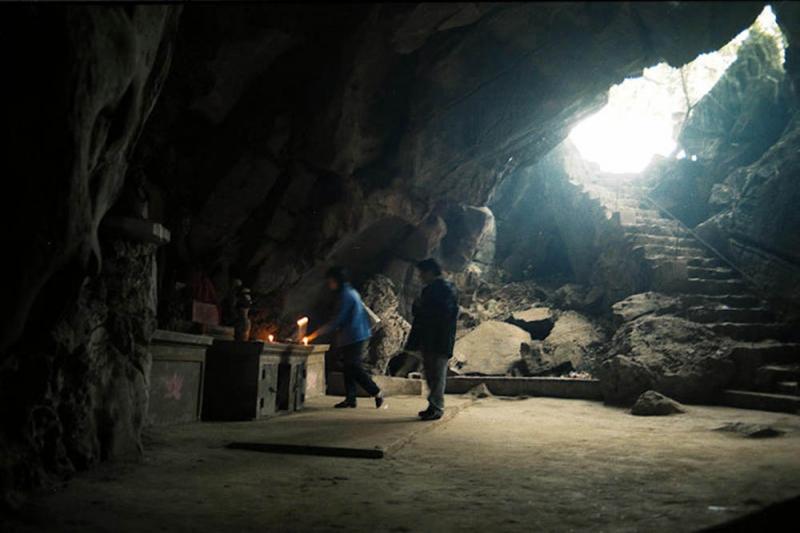
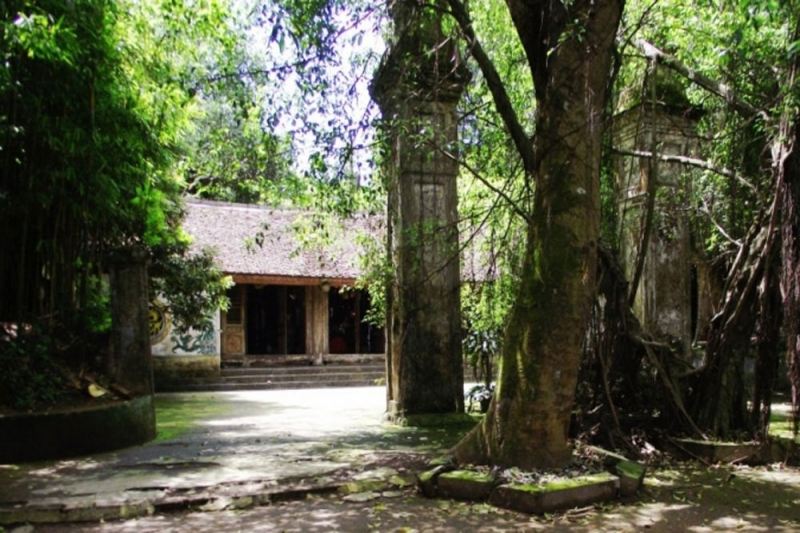
Zinc Drum
Kem Trong is a national scenic spot recognized in 1962, 80km south of the Hanoi capital along National Highway 1A, located between the two provinces of Ha Nam and Ninh Binh. Kem Trong can be simply understood as the place where the Day river flows through two mountains, on the left is Turtle mountain, Co Dong mountain… in Ha Nam province, on the right is Bai Tho mountain and Bat Gia mountain range in Ninh Binh province. . In addition to mountains and rivers, when coming here, visitors can also admire many magical caves with countless stalactites of all shapes stretching throughout the caves. Kem Trong is also a place where poet Ho Xuan Huong gushed a poetic scene that everyone in that area knows a few sentences to this day:
“Mountains on both sides, rivers in the middle
Is this Zinc Drum?
The wind beats the branches and shakes
Waves hit the water surface
It’s a bit narrow in the cave
Out of the young head is already wide
Through my door, you should look again
Who knows the craziness.”
Legend has it that once, King Minh Mang wanted to go down the Day River to visit Kem Trong and Dich Long (Ninh Binh), but when he learned about this poem with many mischievous and profound meanings by Ho Xuan Huong, the most famous king in the world. decided not to cross the river but forced the people in the area to dig another new river for the king’s boat to cross. That’s why there is a river dug next to today that crosses. Traveling to Ha Nam, visitors should not miss an extremely attractive option, which is Kem Trong.
Location : Belonging to 2 communes Thanh Hai, Thanh Liem, Ha Nam, and Gia Thanh, Gia Vien, Ninh Binh (near National Highway 1A).
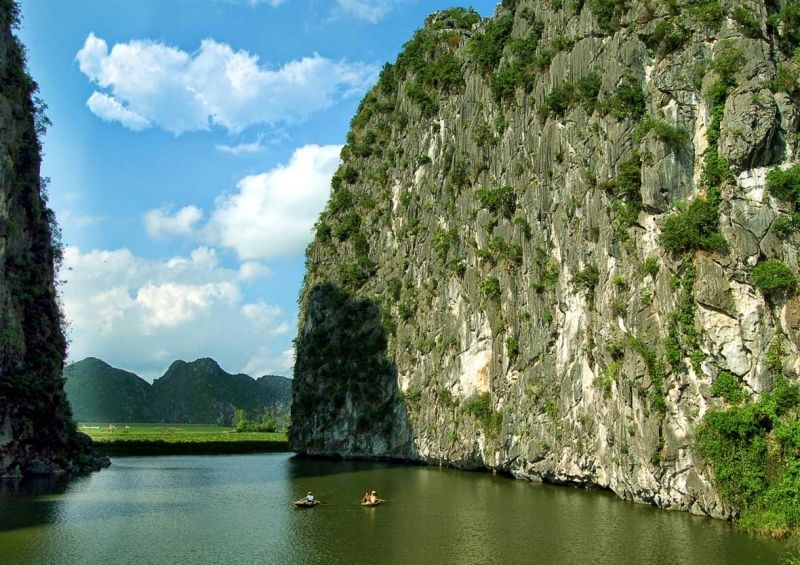
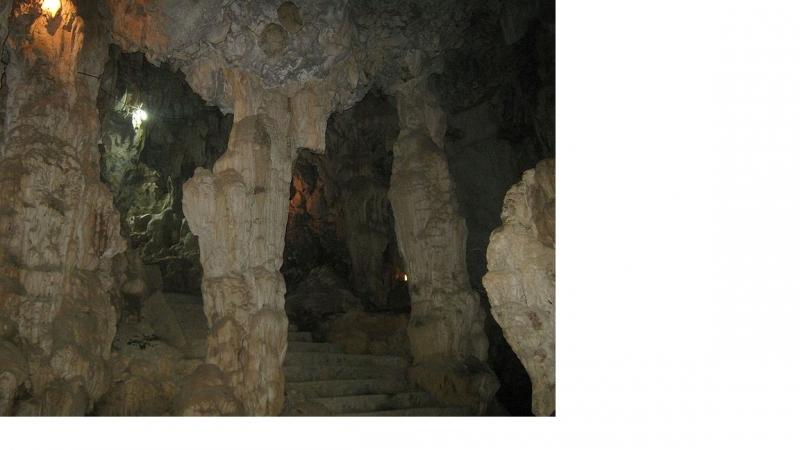
Tran Thuong Temple
Tran Thuong Temple is a typical relic of Ha Nam in particular and the whole country in general, bearing many historical, cultural and spiritual meanings over the centuries. This is the place to worship the Duke of Thiet Chee Tran Hung Dao and his family and generals who had merits in the resistance war against the Mongol army in the 13th century. There is an old folk saying that: “Birth Kiep Bac, Tran Thuong waterfall, Bao Loc’s hometown” means that Tran Thuong temple is the place where Hung Dao Dai Vuong Tran Quoc Tuan entrusted his grave during his lifetime.
Legend has it that this place was formerly a low-lying area with luxuriant reeds, sparsely populated, and 6 high mounds emerged, difficult for the enemy but easy for us. Tran Hung Dao decided to set up 6 food warehouses here to serve the resistance against Nguyen Mong and Tran Thuong was the main warehouse. Therefore, today, every year on the full moon day of January, people in the region and visitors from all over the world come here eagerly to receive the first salary of the year from Saint Tran. The main meeting of Tran Thuong Temple opens from the 18th to the 20th of the 8th lunar month with many unique folklore activities reminding of the tradition of “When drinking water, remember the source”.
If you have the opportunity to visit Ha Nam during Tet, don’t forget to go to Tran Thuong temple to light an incense stick in the memory of the hero who was honored as Saint Tran as well as admire the architecture of a place associated with a heroic history. of the nation.
Location: Tran Thuong hamlet, Nhan Dao commune, Ly Nhan district, Ha Nam province.
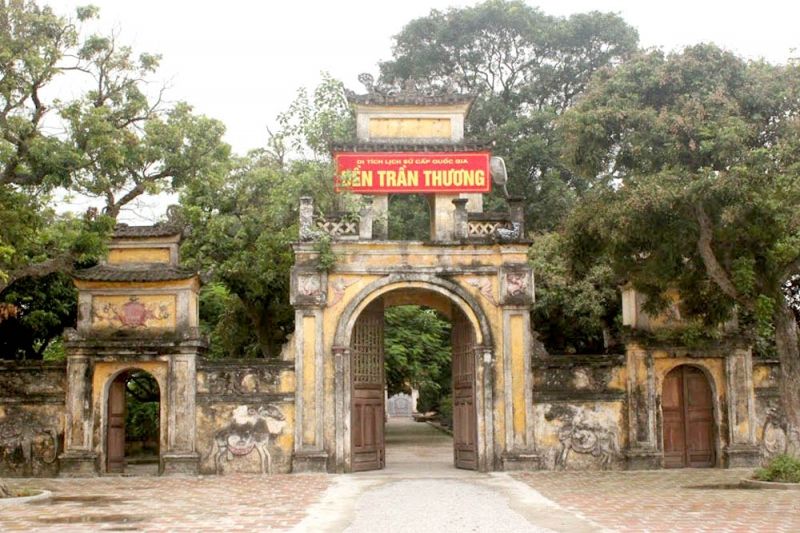
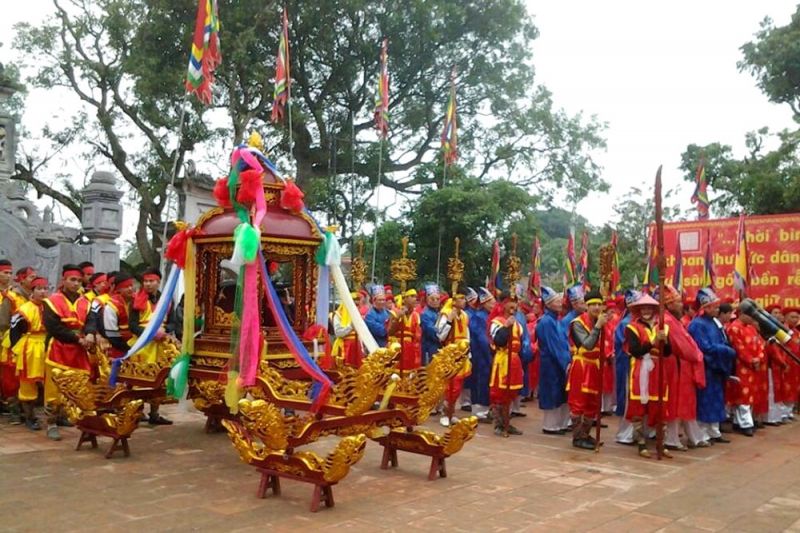
Tam Chuc – Ba Sao eco-tourism area
Tam Chuc’s eco-tourism area covers an area of 5100ha, including a system of scenic spots, notably Tam Chuc lake and Ba Sao pagoda. Tam Chuc Lake alone has an area of up to 600ha, the largest natural freshwater lake in the country. The natural landscape of the eco-tourism area still retains a magnificent wild beauty, three sides are surrounded by That Tinh mountain range in the shape of a throne, under the lake there are 6 rocky mountains rising from the water called Luc Nhac. . That’s why there is a saying: “Before Luc Nhac – After Seven Stars”.
Tam Chuc Lake is located in a very unique rocky mountainous wetland with majestic scenery, vast and airy space and extremely rich vegetation. There is also a spiritual area being planned with a large area of up to 147ha. Coming to Tam Chuc, visitors will admire the giant Buddha statue weighing 200 tons, the largest bronze statue in Southeast Asia today. In the future, this promises to be a potential spiritual and eco-tourism destination, very suitable for weekend trips from the Hanoi capital and the Northeast provinces.
Location: Ba Sao Commune, Kim Bang District, Ha Nam Province.
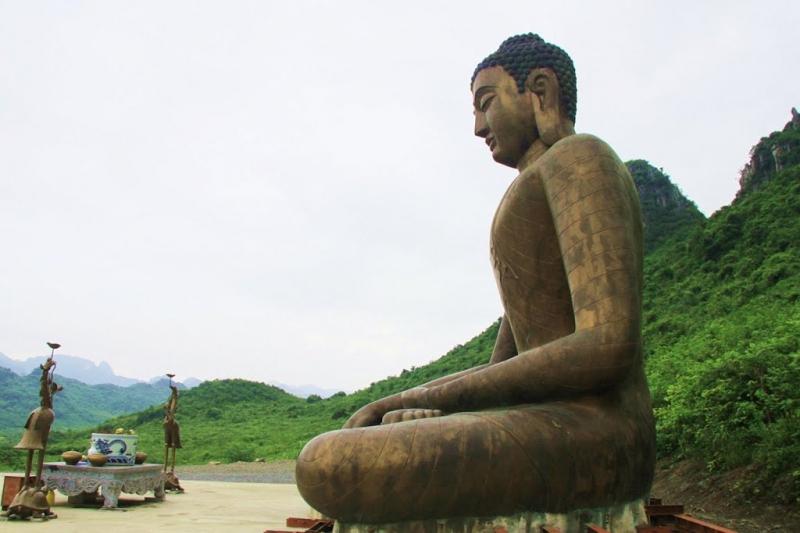
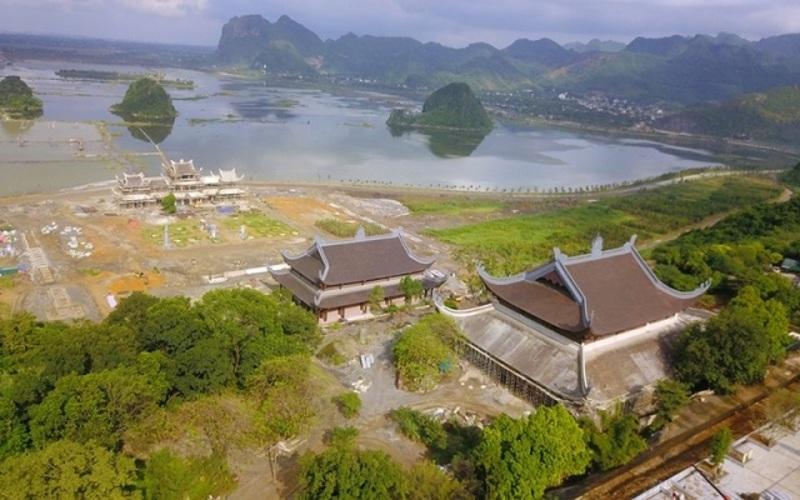
Doi Tam Drum Village – more than 1000 years old craft village
Doi Tam village located at the foot of Doi mountain is a village that has been making drums for many generations, it is said that for more than 1000 years, it is recognized as “Vietnam’s typical craft village”, contributing to preserving a special cultural feature that has been attached to Doi Tam. long-standing bundle in the minds of Vietnamese people. Not only that, but Doi Tam is also known as the place that made the largest thunder drum in the country with a diameter of 2.35m, a height of 3m to serve the 1000th anniversary of Thang Long – Hanoi, now located in the Temple of Literature. Tu Giam.
Visiting the traditional craft village of Doi Tam , visitors will observe and learn about the process of making all kinds of drums, from cheo drums, communal drums, school drums, or even rice drums. Try participating in some simple processes as well as buy some nice little drums as souvenirs for yourself and your family.
Location: Doi Tam Village, Doi Son Commune, Duy Tien District, Ha Nam Province.
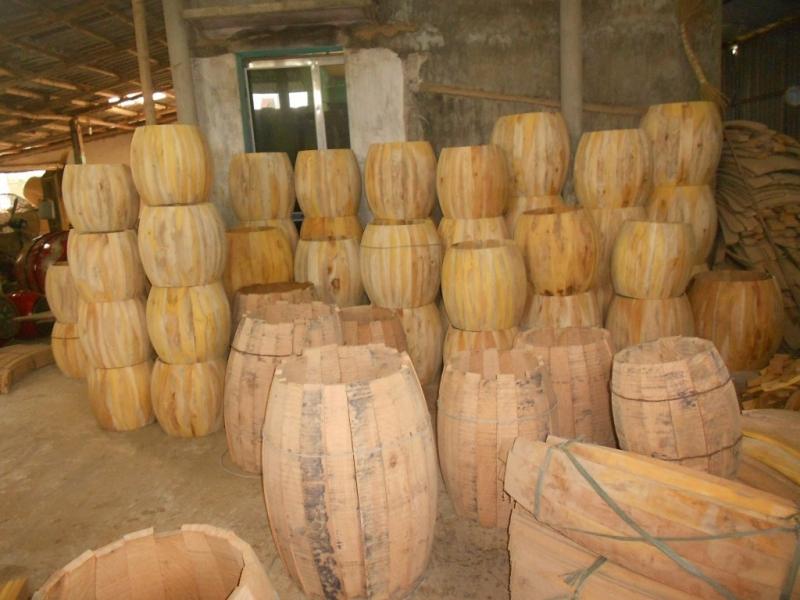
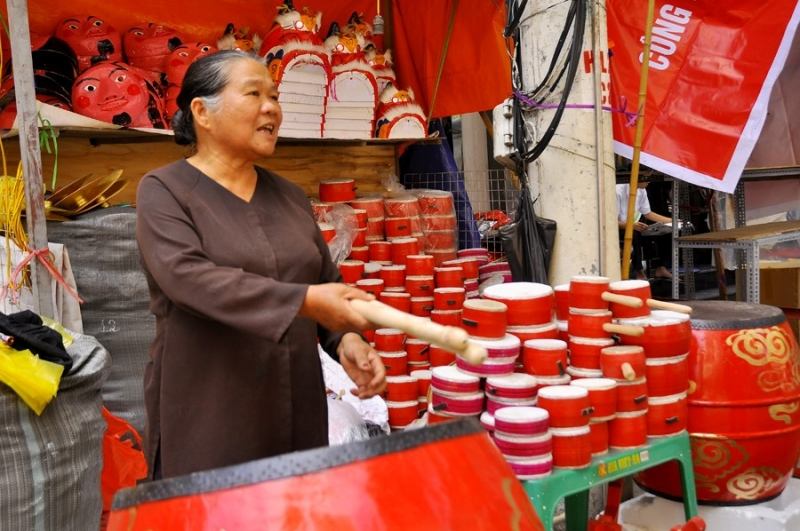
Nha Xa silk weaving village
Nha Xa silk weaving village is nestled on the side of the Red River heavy with alluvium, at the foot of Yen Lenh bridge connecting the two provinces of Hung Yen and Ha Nam. The beauty of Nha Xa silk has captivated many merchants and tourists from all over the world, its reputation is second only to Van Phuc silk. In the 1930s, the craft village flourished, Nha Xa silk was present everywhere, even exported to foreign markets. However, there was a time when Nha Xa silk was fiercely competed by cheap Chinese goods to attack the domestic market. But thanks to the households dedicated to the silk industry, the Nha Xa silk brand has been maintained sustainably to this day.
Visiting the craft village, you will see all the stages to make complete silk with all kinds of items such as flower silk, cotton, linen, silk… with extremely eye-catching designs and colors. . In particular, if you are lucky enough to come here on a sunny day, you will be able to admire and take countless shimmering photos with the “silk fields” of extremely impressive colors. Visiting Nha Xa silk weaving village as well as other traditional villages of Ha Nam is an exciting new experience that should be tried once in your life.
Location: Moc Nam Commune, Duy Tien District, Ha Nam Province.
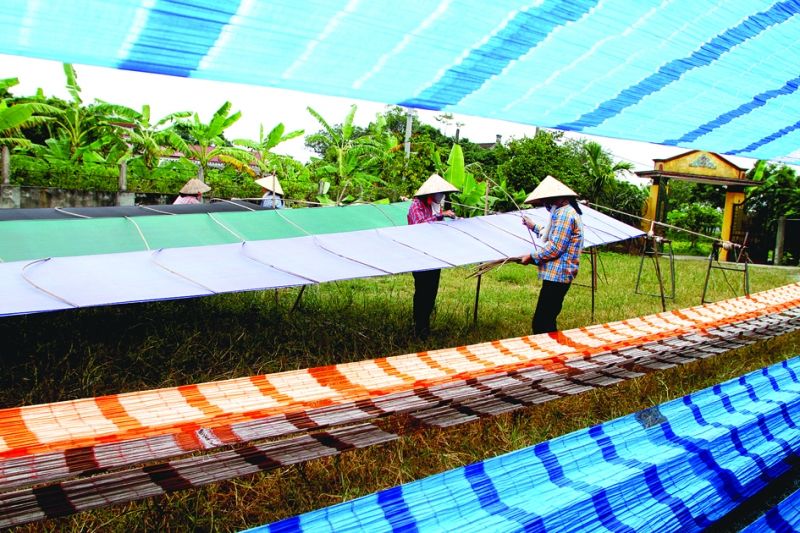
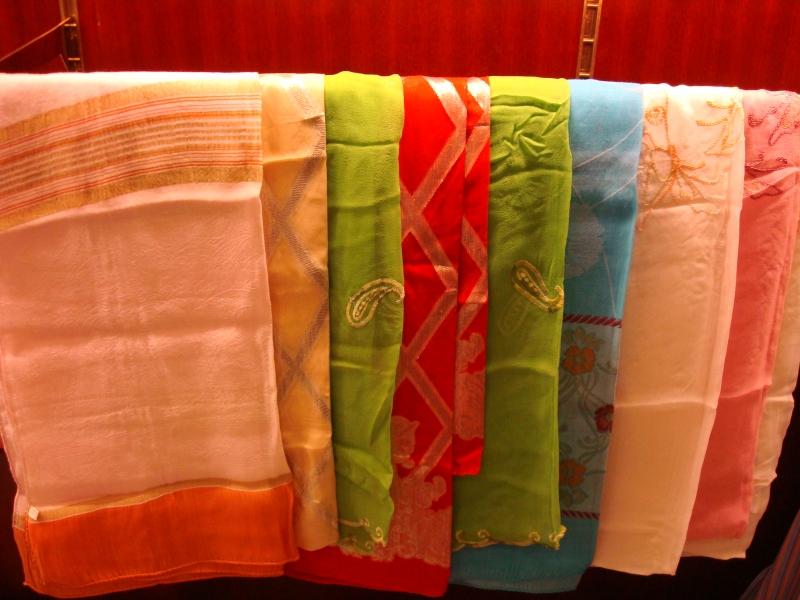
Lanh Giang Temple – Linh Giang Linh Tu
Lanh Giang Temple, or Lanh Temple for short, worships three generals of the 18th Hung Kings who helped King Hung fight the invaders to defend the country against Thuc Phan and worship Princess Tien Dung and Chu Dong Tu. When the temple was built until now, there are no exact documents, but according to the Chinese characters carved on the roof of the second court, the temple was last restored in the 18th year of Bao Dai. Many times of restoration, today the scale of the temple has reached 3000m2.
Coming here, visitors will have the opportunity to admire the massive and superficial spiritual architecture with a long history, including 3 buildings with 14 compartments, on both sides there are guest houses, worshiping floors, built in the style of domestic and foreign countries and many others. elaborately carved valuables. Especially, every year at the beginning of the 6th lunar month, the Lanh Giang festival will take place with many special palanquin processions and performances, attracting a large number of visitors from all over the world to visit and attend the ceremony. Lanh Giang Temple is an extremely unique religious tourist destination on the journey to Ha Nam of tourists.
Location: Yen Lac village, Moc Nam commune, Duy Tien district, Ha Nam province.
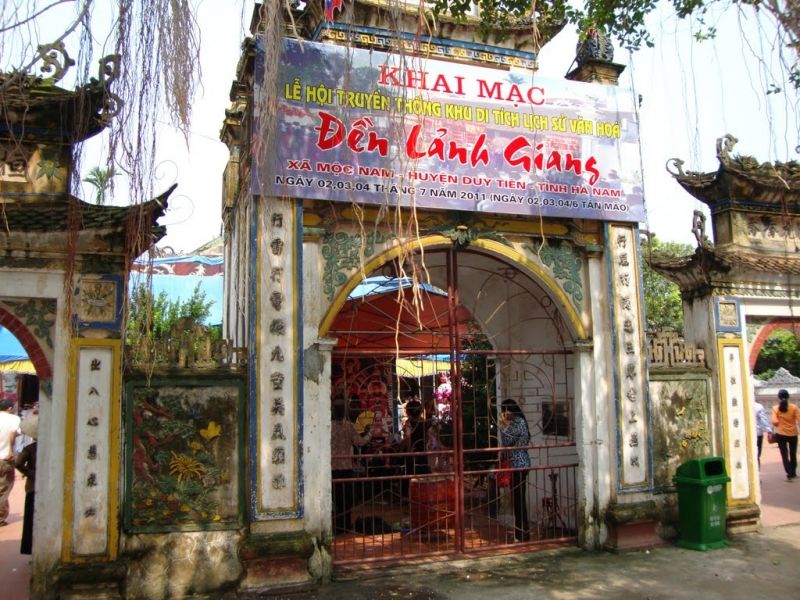
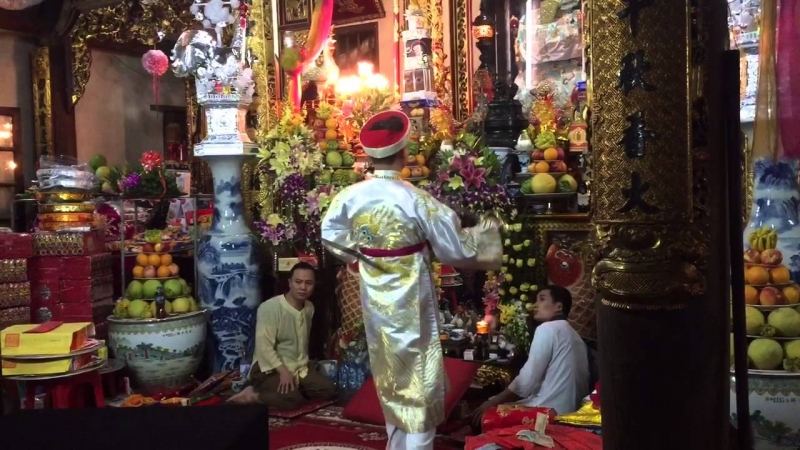
Luon Cave – Ao Dong
Luon Cave – Ao Dong is located in a small valley surrounded by immense green mountains and has many fanciful caves, wide open according to the water. Luon Cave is 400m long with many stalactites with various shapes, one from the ceiling hanging down, the other from the bottom rising. With the murmur of small streams of water flowing from the cliffs, you will feel like you are lost in one of the amazing caves of miniature Ha Long Bay.
In the cave, there is no system of multi-colored lights like in Ha Long, but with natural light rays reflected in the sparkling water, you still feel the magical space. Ao Dong is about 300 acres wide, Ao Dong’s water is clear and one color. On the slopes surrounding Ao Dong are not only birds and white storks, but also some small mammals and chamois. Before the wild but romantic painting with a cool climate, this is a great choice for those who love nature.
Location: But Phong village, Lien Son commune, Kim Bang district, Ha Nam.

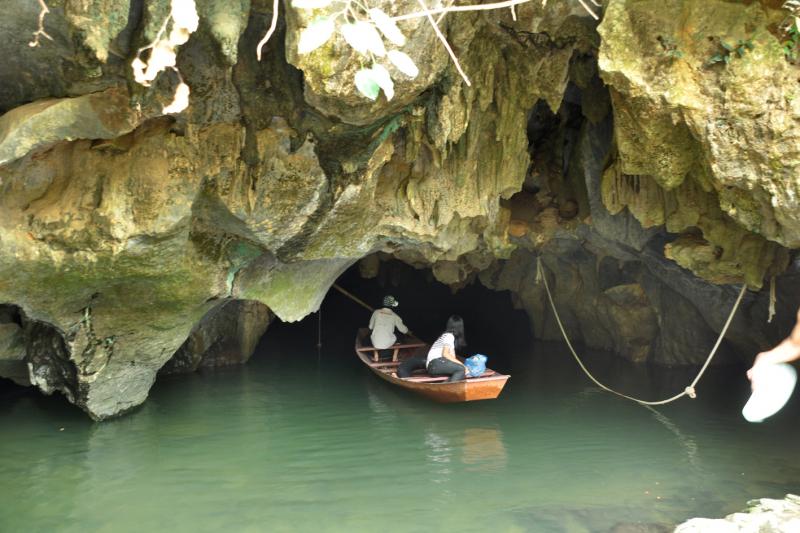
Phuc Long Cave
Phuc Long cave is located in the Chua mountain area, Chua mountain is the central mountain of Kien Khe mountain range, above there is Hang pagoda and a shrine to worship gods. According to the old tradition, on the pagoda mountain range, there are dragons gathered on the top, there are ancient pine trees, so this place is considered a beautiful fairy tale in Ha Nam. Chua Mountain has large rocks stacked in order, jagged cliffs, strange shapes like a dragon’s head, with sharp rocks like dragon’s horns and the pagoda as the center of the dragon’s mouth. The way to the mountain is not too difficult because there are many stone shelves lined up in steps that are very suitable for exploring.
At the top of the mountain, you can zoom out to see the beauty of But Son mountain, Thanh Thuy forest, and Day river. Exploring Phuc Long cave on the mountain, we go into the cave to meet a fork, turn to the right, we see dozens of caves with many sparkling stalactites, go to the left, we meet a high rocky road. omnipotent shape. In Phuc Long cave, there are many species of bats residing, moreover, the cave has the shape of a pocket dragon, the cave is wide with a capacity of up to several hundred people. Along with the landscape of Chau communal house and the majestic Chua mountain, this place is an attractive destination in Ha Nam.
Location: Kien Khe Town, Thanh Liem, Ha Nam.
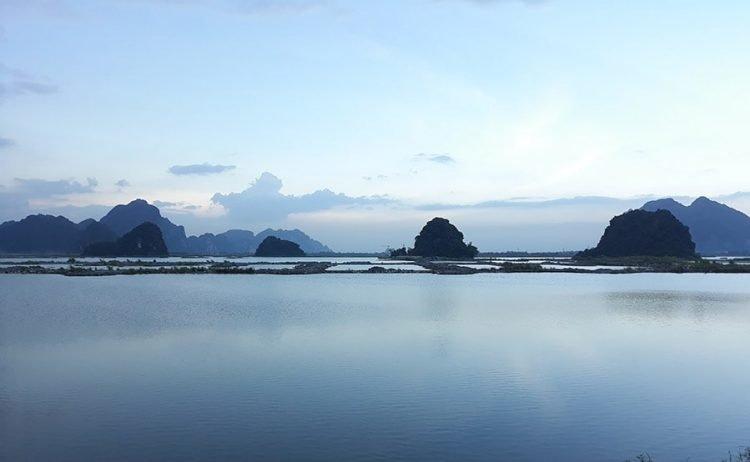

Bat Canh Son
High mountains, deep rivers, trees, pagodas … are charmingly intertwined, creating a majestic and poetic natural picture of the scenic Bat Canh Son . Tien Ong Temple will be the first stop, located on Linh statue mountain (also known as Elephant mountain). This temple built in the reign of King Tran Nhan Tong makes an impression from the exquisitely carved gate, fully converging the four spirits: Long, ly, Quy, and phoenix. On both sides of the gate is a stone elephant statue in a kneeling position, similar to the statue in the Voi Phuc temple (Hanoi).
Climbing more than 100 zigzag stone steps, guests will reach the main temple. The temple is surrounded by tall old trees, wide foliage interspersed with square mountain rocks. Standing from here or climbing to the top of Tuong Linh, visitors will see the whole picture of Kim Bang village with tiled houses and fields, a large, clear blue lake in front of… The magnificence of nature Nature has given the temple a dignified and elegant appearance, majestic and poetic. About 1 km from Tien Ong temple , along the mountainside, you will come to Tam Giao pagoda. The pagoda was built in the shape of a nail, with a roof of match-stacks made of male tiles. Behind the pagoda, there is also a fairy peachtree with luxuriant branches and leaves, still blooming and bearing fruit.
From Tam Giao Pagoda, going back to the top of the mountain about 200m will come to Kieu Pagoda, the temple now has only the foundation and a 10m2 wide cave. Along the way to the temple, guests can freely admire the scenery of the mountains blending with the river below. From Tam Giao pagoda, go back to the top of the mountain about 200m, you will come to Kieu pagoda, now only the foundation remains and a 10m2 wide cave. Along the way to the temple, guests can freely admire the scenery of the mountains blending with the river below.
Location : Tuong Linh Commune, Kim Bang District, Ha Nam.
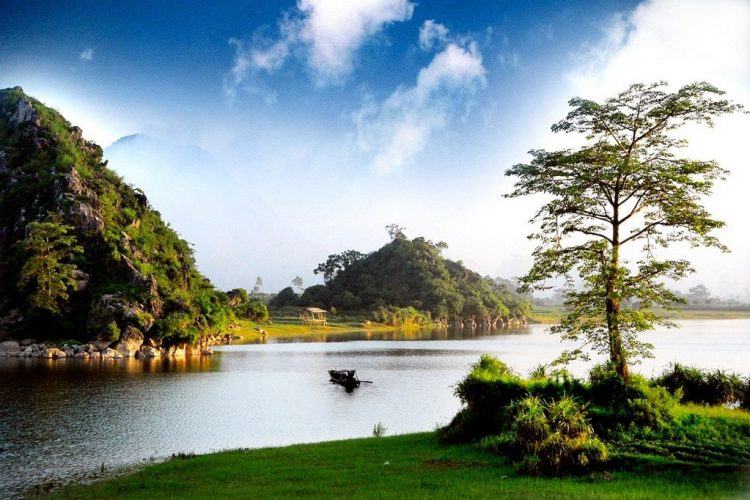
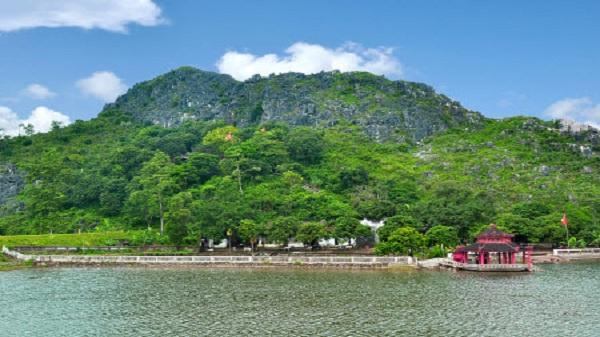
Pioneer Stone Communal House
The communal house worships Princess Nguyet Nga , the female general of Hai Ba Trung. Her real name is Nguyen Thi Nga, she is from An Mong village (also known as Mong village). Because she refused to be a concubine for To Dinh’s brutal greed, her parents were killed. The country’s debt and hostility made her recruit soldiers and use her homeland as a base to fight. After winning the government, Hai Ba Trung named her Princess Nguyet Nga and appointed her as an official at Ly Nhan Palace. She returned to her hometown, held a party to celebrate, and lived by the river to later be a place of incense and smoke to worship. The land that was born since then is still in the hilly area along the Chau River. She also taught people to grow mulberries, herd silkworms, and weave cloth, so people here respect her as the ancestor of the mulberry profession.
According to legend, An Mong stone communal house was built a long time ago on the alluvial ground next to the river, the birthplace of Nguyet Nga. But later due to the river landslide, it had to be moved to the current position. The communal house has 3 buildings built in the style of public letters: the front hall has 5 compartments, the second building has 2 compartments, and the main plate has 3 compartments. The most unique is the stone forecourt made in the way of stacking, maze, with 12 great pillars (the main pillars). Although the main column is made of stone, it is still made in the shape of a bud, in the middle it is enlarged, the two ends are reduced. The system of columns, columns, and porch columns of the stone pavilion has up to 30 large and small pieces, all carved with elaborate carvings, showing the elaborate and sophisticated carving art of his father.
Tien Phong Stone Communal House is one of the few communal houses made of stone that is still preserved to this day. The communal house must use hundreds of large and thick stone blocks to form five rows of columns, six pillars, and many crossbeams, vertical beams, footstones, and labyrinths. The special thing is that on the stone parts that easily create a heavy feeling, there are elaborate artistic carvings, giving the house a soft, lively and attractive look. The front hall of the communal house stands out with a large stone column system but is designed in a soft-bud style.
Location : An Mong village, Tien Phong commune, Duy Tien district, Ha Nam.
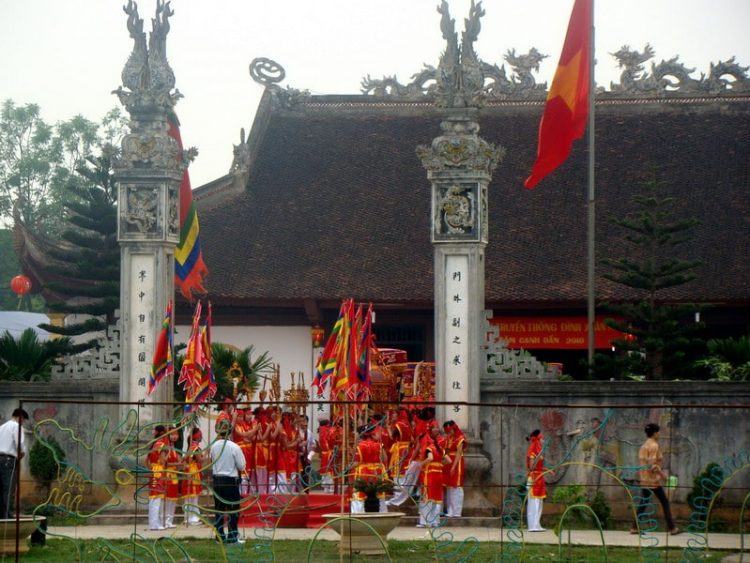

Ngoc Dong bamboo and rattan village
Newly born, here mainly produce rattan chairs. This product was immediately accepted by many people because of its beautiful design and being suitable for tropical climates. The reputation of the craft village is becoming more and more resounding day by day, people coming to order products, sellers of raw materials are increasingly busy. Like many other craft villages, the bamboo and rattan craft in Ngoc Dong has encountered many difficulties when switching mechanisms. However, Ngoc Dong’s class of workers struggled to find ways to improve quality, improve designs, and seek markets in Western Europe and Southeast Asian countries. Thanks to that, the craft village has stood firm and gone up.
The traditional profession has brought Ngoc Dong obvious economic benefits that cannot be denied. In addition, other social benefits that craft villages bring cannot be counted, such as repelling social evils, children in addition to studying also participate in helping their families do more knitting. Elderly artisans create designs and designs. The elderly and children work as nannies, the owners buy and collect products, looking for contracts of economic value; The people who directly make the products than dry and dry them, the miners prepare for the trip… Visiting the craft village, you will understand more about the stages of making products and love the people who are today. The night created the famous bamboo and rattan brand here.
Location: Hoang Dong, Duy Tien, Ha Nam
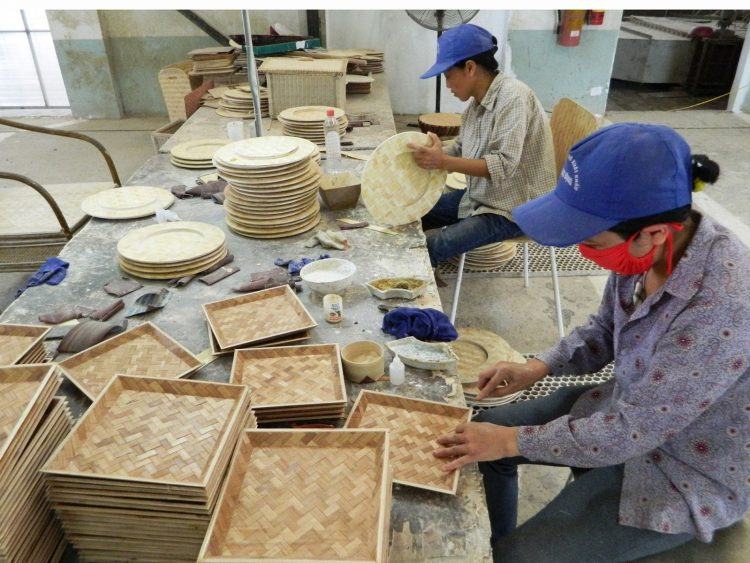
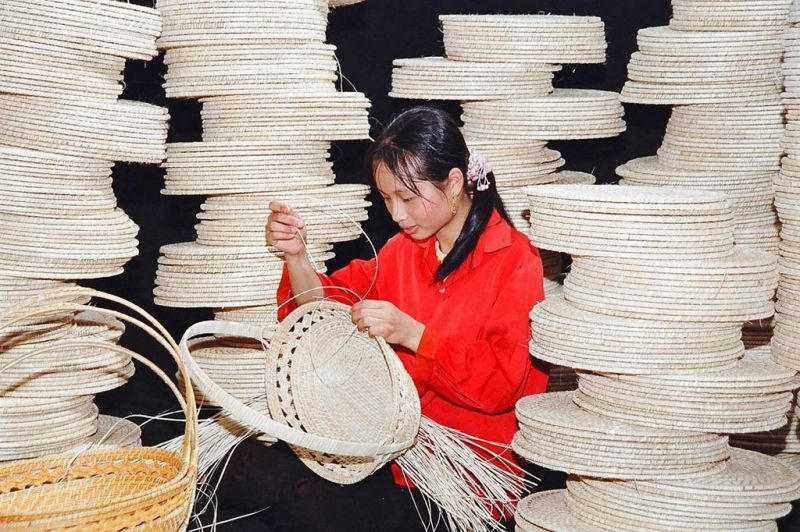
Thanh Ha embroidery village
Thanh Ha commune is located along National Highway 1A in Thanh Liem District, Ha Nam province, about 10 km south of Phu Ly town. Thanh Ha has two main villages doing embroidery , namely An Hoa and Hoa Ngai, bringing in annual revenue of nearly 2 million USD. Now, Thanh Ha embroidery village is also an interesting tourist destination for tourists from all over the world.
For each Thanh Ha craftsman, each stitch brings them endless inspiration. Under skillful hands, the petals gradually come to life, whether to decorate the middle of the mattress or the corner of the handkerchief. The petals also create elegant and romantic trim lines across the linens and curtains, they can also be randomly embroidered to remind us of floral embroideries. simple since the early years of the eighteenth century… All have created an embroidered space with all kinds of colorful flowers showing off.
Location : Thanh Ha, Thanh Liem, Ha Nam
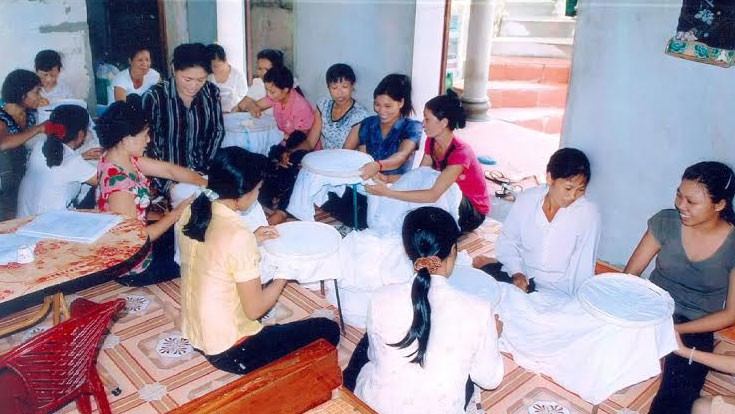
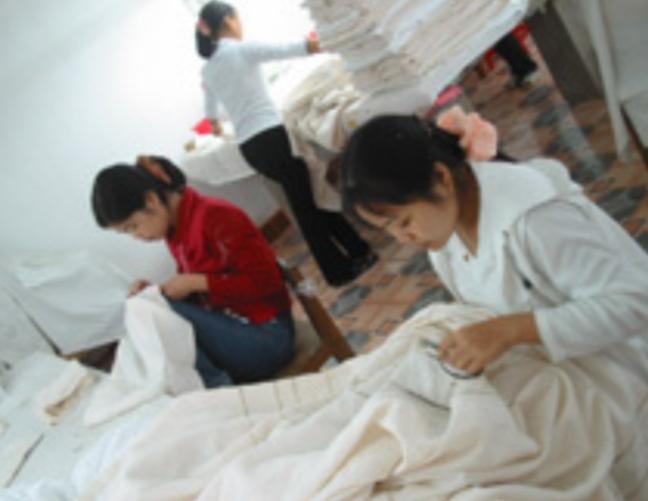
Ha Nam is home to many natural tourist attractions, spiritual-cultural tourism, and attractive traditional craft villages with great potential for development. Ha Nam promises to be an attractive destination for a weekend trip near Hanoi, replacing tourist attractions that are too familiar to tourists.
